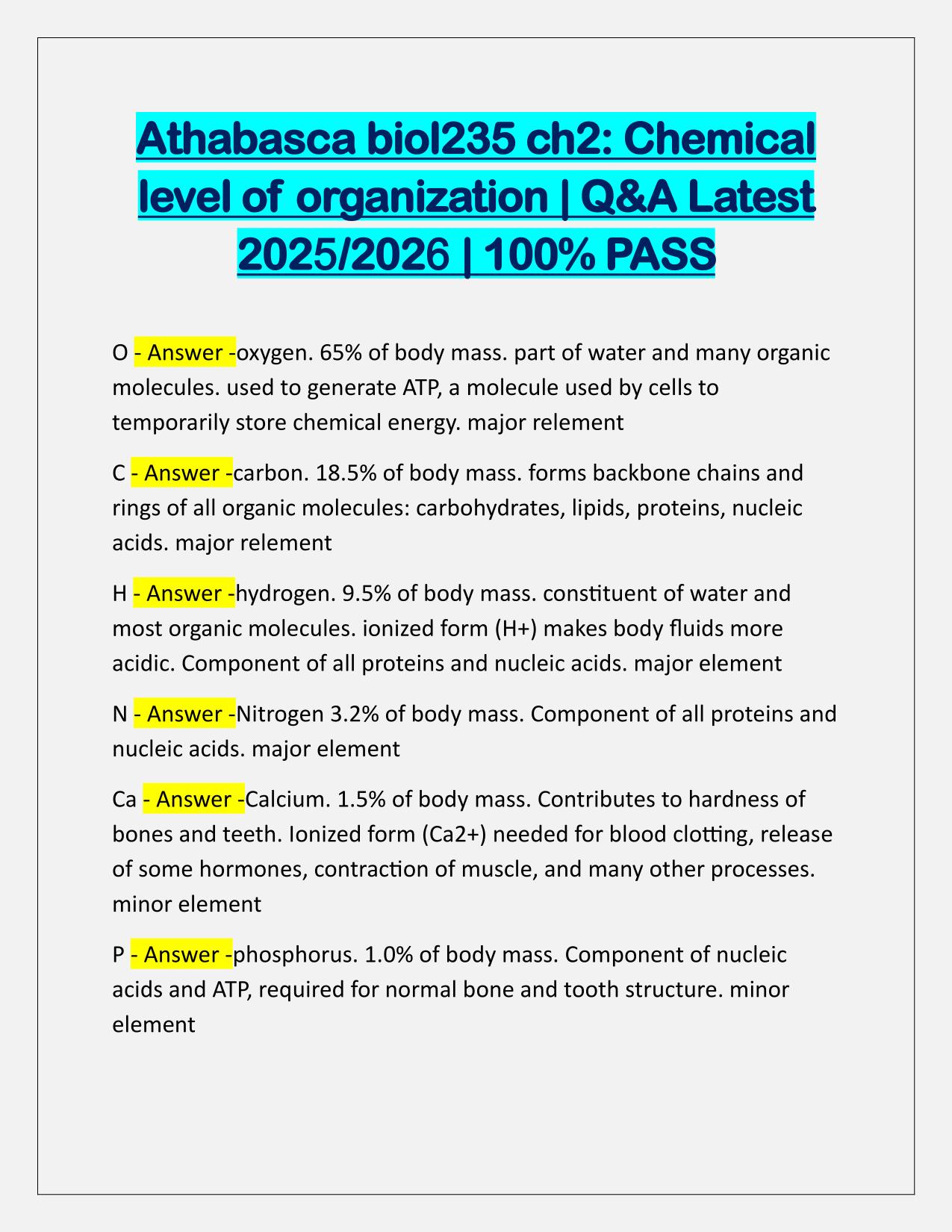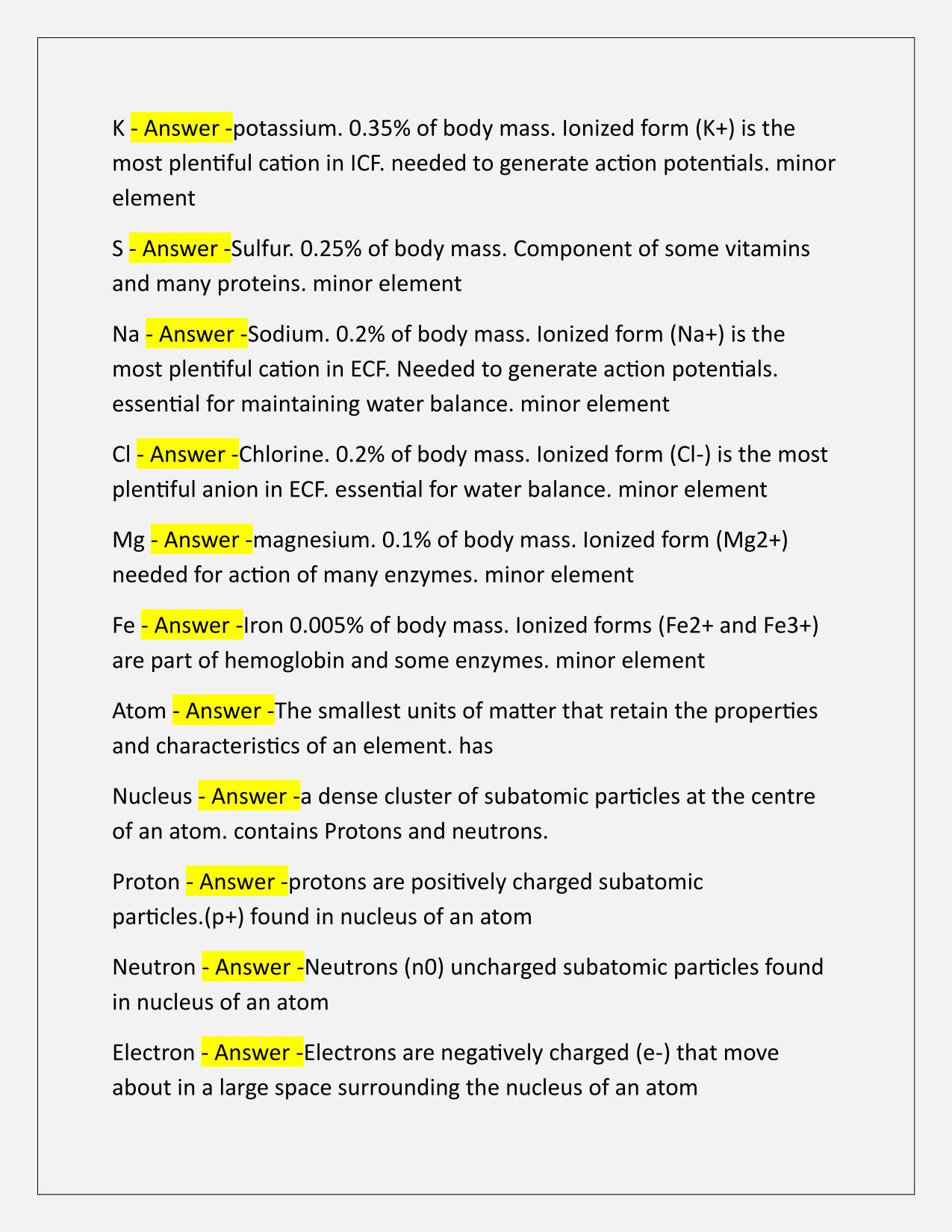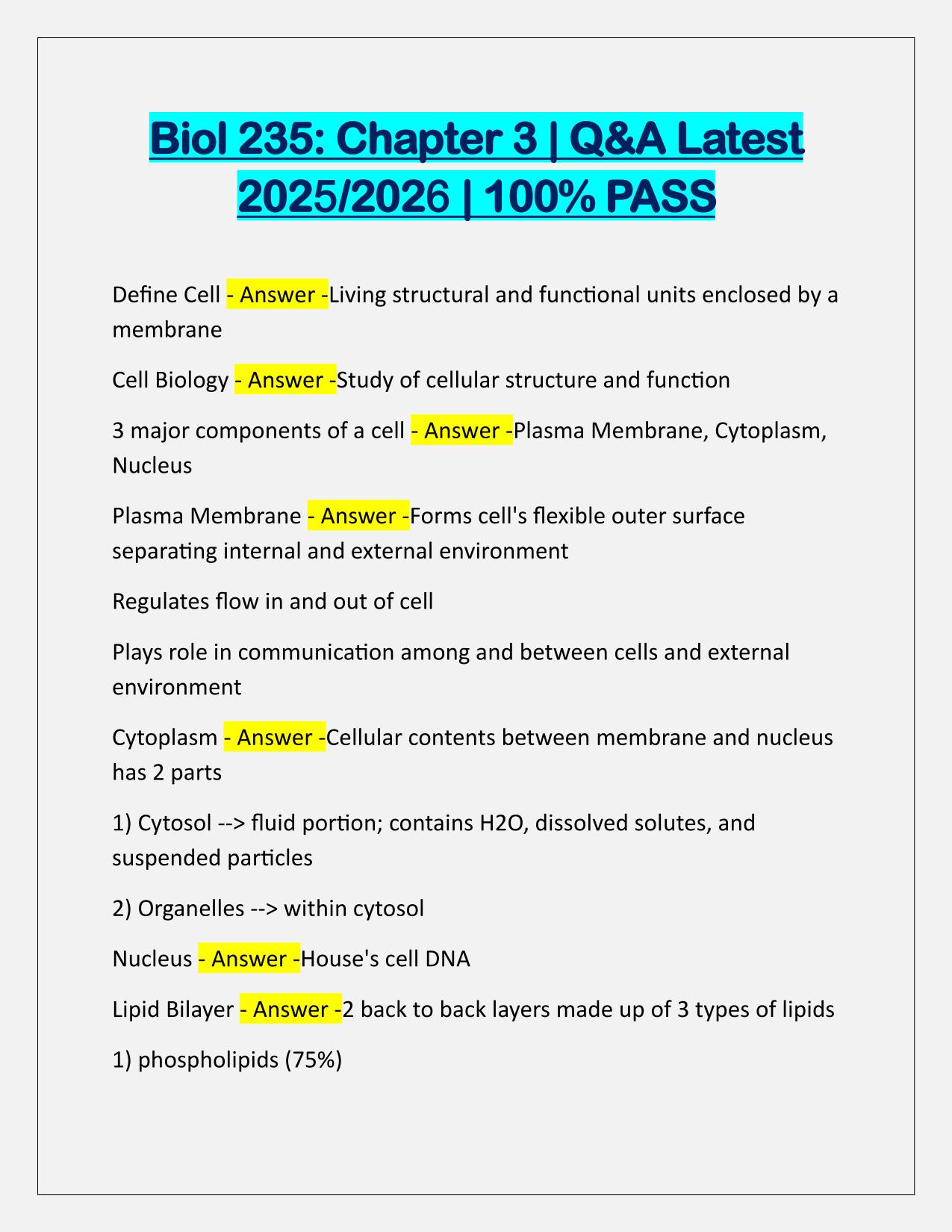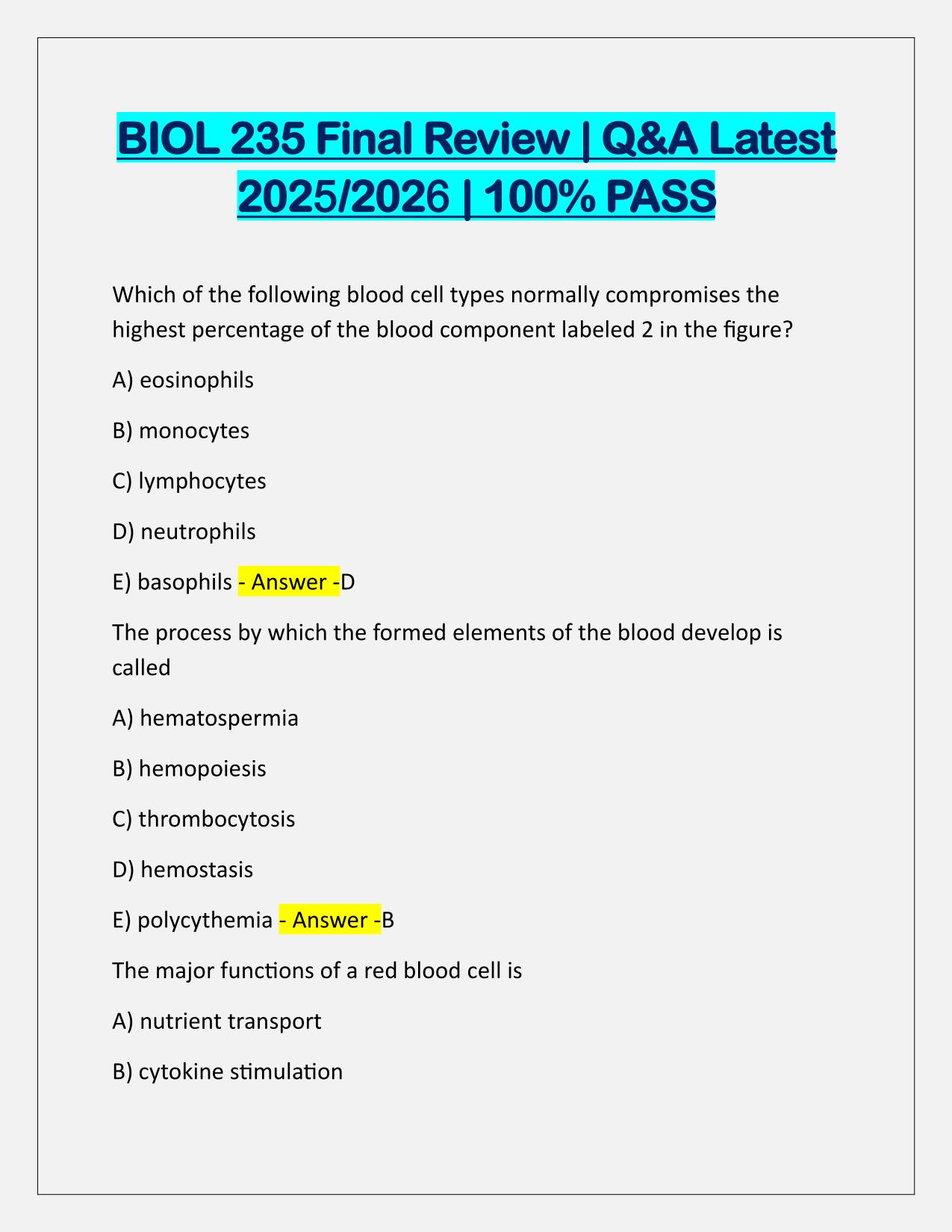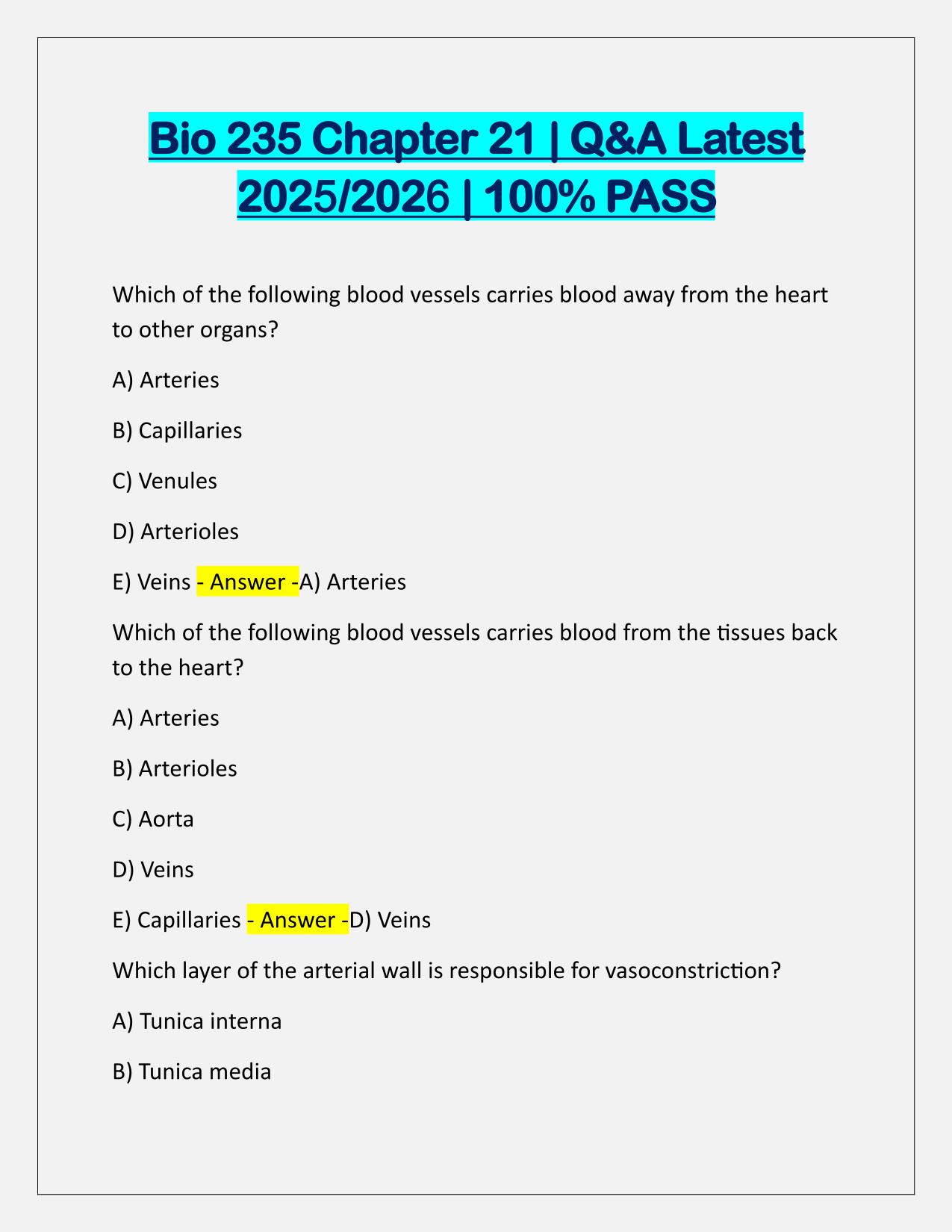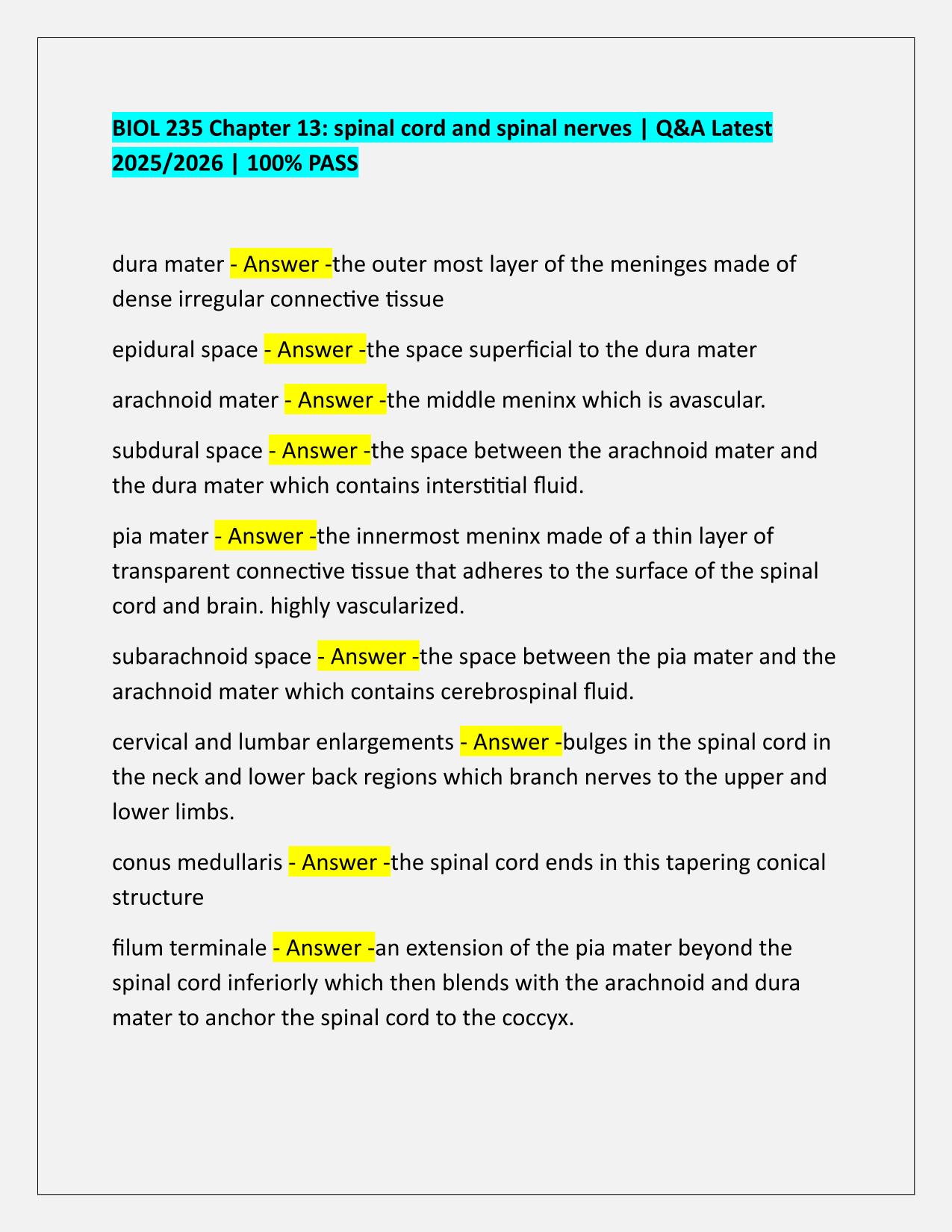Athabasca BIOL235 ch2 Chemical level of organization Q&A Latest Update
Course:
BIOL 235
Institution:
BIOL 235
Athabasca BIOL235 ch2 Chemical level of organization Q&A Latest Update
After purchase, you get:
✅ Instant PDF Download
✅ Verified answer explanations
✅ Refund if not Satisfied
✅ Prepared for 2025/2026 test cycle
Document Information
| Uploaded on: | May 8, 2025 |
| Last updated: | May 8, 2025 |
| Number of pages: | 14 |
| Written in: | 2025/2026 |
| Type: | Exam (elaborations) |
| Contains: | Questions & Answers |
| Tags: | Athabasca BIOL235 ch2 Chemical level of organization Q&A Latest Update |
Seller Information

AdelineJean
User Reviews (0)
Exam (Elaborations)
$9.00
Bundle Deal! Get all 17 docs for just $25.00
Add to Cart
100% satisfaction guarantee
Refund Upon dissatisfaction
Immediately available after purchase
Available in Both online and PDF
$9.00
| 0 sold
Related Documents
Available in a Bundle
Content Preview
Athabasca biol235 ch2: Chemical level of organization | Q&A Latest 2025/2026 | 100% PASS O - Answer -oxygen. 65% of body mass. part of water and many organic molecules. used to generate ATP, a molecule used by cells to temporarily store chemical energy. major relement C - Answer -carbon. 18.5% of body mass. forms backbone chains and rings of all organic molecules: carbohydrates, lipids, proteins, nucleic acids. major relement H - Answer -hydrogen. 9.5% of body mass. constituent of water and most organic molecules. ionized form (H+) makes body fluids more acidic. Component of all proteins and nucleic acids. major element N - Answer -Nitrogen 3.2% of body mass. Component of all proteins and nucleic acids. major element Ca - Answer -Calcium. 1.5% of body mass. Contributes to hardness of bones and teeth. Ionized form (Ca2+) needed for blood clotting, release of some hormones, contraction of muscle, and many other processes. minor element P - Answer -phosphorus. 1.0% of body mass. Component of nucleic acids and ATP, required for normal bone and tooth structure. minor element
